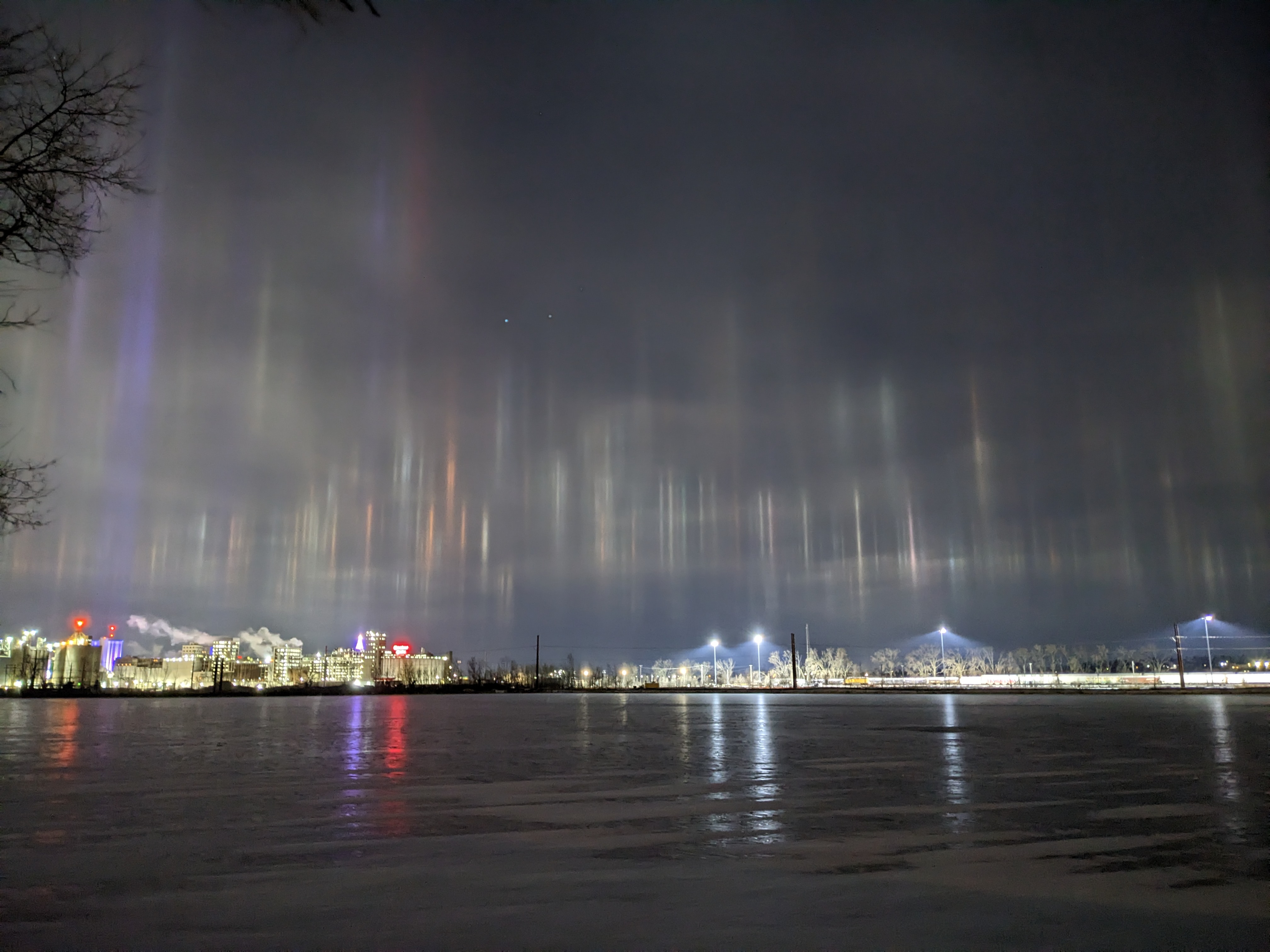The phenomenon of Light Pillars is one of the mesmerizing and enigmatic occurrences that graces our skies. These vertical columns of light not only paint a beautiful canvas but also raise questions about their origins and the mechanisms behind their formation. This article delves into the realm of Light Pillars, attempting to shed light on the mysteries surrounding this captivating phenomenon.

Light Pillars are optical phenomena that manifest when light from a light source, such as streetlights, city lights, or the Sun, interacts with tiny ice crystals in the atmosphere. Typically, they occur in regions with cold and humid weather conditions.The primary cause of this phenomenon is related to the reflection and refraction of light on small ice crystals, such as snow, ice, or other crystalline particles. The light from the light source interacts with these crystals, creating an image of them in the sky and forming the distinctive vertical columns.

Pillars often exhibit colors reflected from the original light source. They can appear in a variety of hues, depending on the characteristics of the crystals and the ambient light. The shape of these pillars can range from straight vertical columns to complex and aesthetically pleasing patterns.Pillars are commonly observed in areas with cold weather, especially during winter nights when the air is moist and rich in ice crystals. Additionally, they may appear in regions covered with snow.Light Pillars are occasionally confused with other optical phenomena such as Halos and Sundogs. However, each phenomenon has its own distinct causes and formation mechanisms.

Light Pillars stand not only as a visually enchanting optical display in the sky but also as a half-explored sphere full of mysteries. While there exists a scientific explanation for their occurrence, there are still aspects waiting to be fully unraveled. Understanding more about Light Pillars not only enhances scientific curiosity but also opens up new opportunities to explore the diversity of the universe surrounding us.